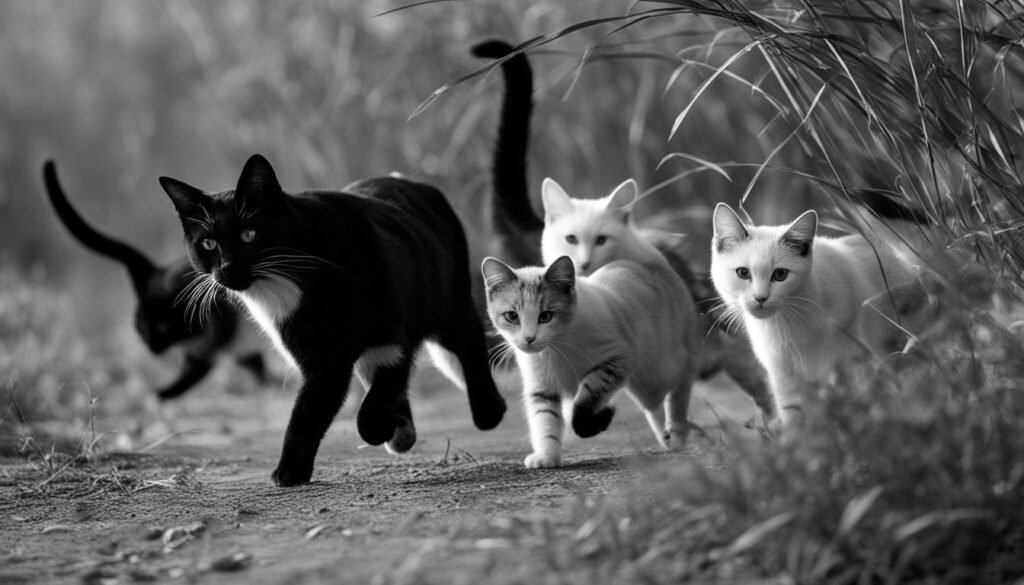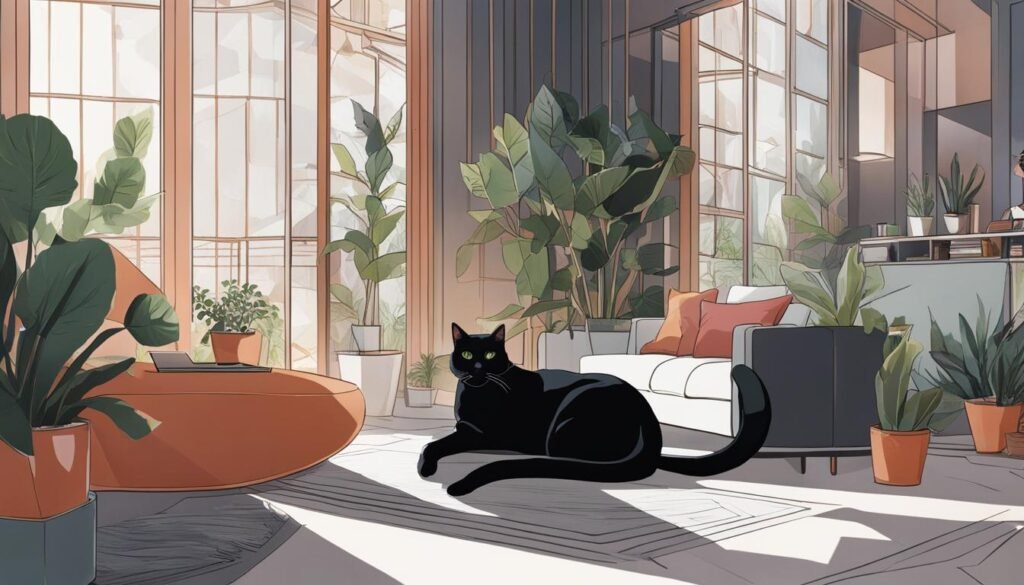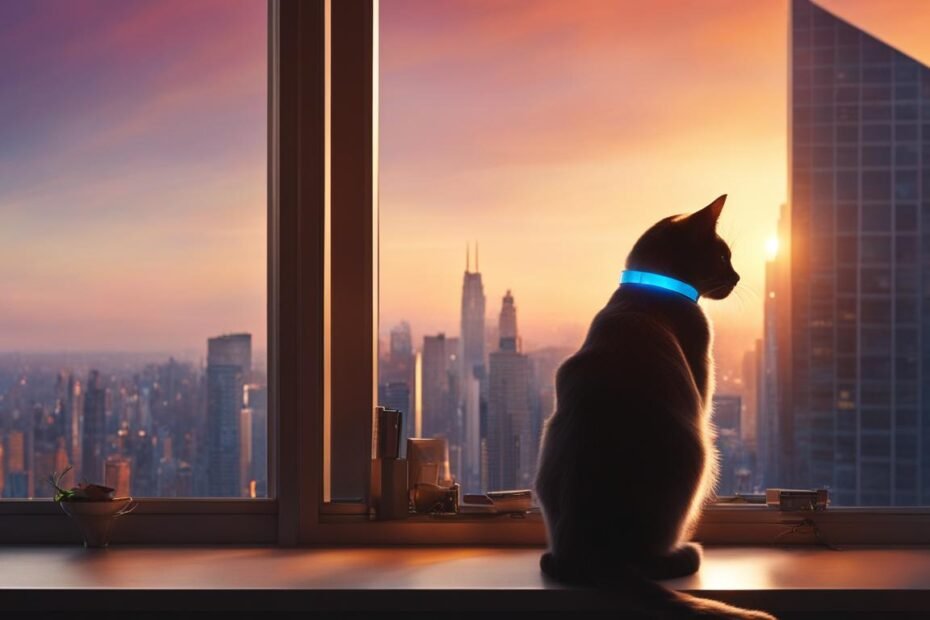Welcome to our exciting exploration of modern cat domestication! In this article, we will delve into the fascinating journey of our feline friends, uncovering the secrets of their evolutionary process, the diversity of cat breeds, and the impact of cats on our society. Let’s embark on this adventure together and discover the wonders of modern cat domestication!
Key Takeaways:
- Modern cat domestication traces back thousands of years and involves the transition of cats from wild creatures to domestic companions.
- The domestication process has led to the emergence of various cat breeds through selective breeding, resulting in distinct traits and appearances.
- Cats play a significant role in our society, with ancient civilizations like Egypt worshiping them as sacred creatures.
- The internet has brought cats into the limelight, making them popular subjects of videos and memes that entertain millions.
- Cat ownership has a substantial economic impact, driving the growth of the pet industry and creating opportunities for cat-related products and services.
The Physiology of Feline Behavior
Cats are fascinating creatures, and their behavior is shaped by a combination of factors, including their physiology. Understanding the physiological aspects of feline behavior can help us create a conducive environment for our feline friends.
Neural Pathways and Instincts
Cats possess complex neural pathways that regulate their behaviors. These pathways are formed through a combination of genetic predisposition and early life experiences. For example, the instinct to hunt is deeply ingrained in cats, as it has been essential for their survival throughout evolution. The neural pathways associated with hunting behavior are activated when cats see moving objects, triggering their hunting instincts.

Hormonal Influences
Hormones also play a significant role in shaping cat behavior. Reproductive hormones, such as testosterone and estrogen, can influence aggression, territoriality, and social behavior. Unneutered male cats, for instance, may exhibit more aggressive behavior due to heightened testosterone levels. By understanding the hormonal influences on cats’ behavior, we can take appropriate measures to mitigate any undesirable behaviors and provide them with a safe and harmonious environment.
| Behavior | Neural Pathways | Hormonal Influences |
|---|---|---|
| Hunting | Triggered by moving objects | Not significant |
| Grooming | Innate behavior for cleanliness | Not significant |
| Territoriality | Controlled by olfactory cues | Testosterone in unneutered males |
| Social Behavior | Developed through interactions | Testosterone, estrogen |
By delving into the physiology of feline behavior, we gain valuable insights into their instincts, neural pathways, and hormonal influences. This knowledge empowers us to create environments that cater to their needs and ensures their overall well-being.
Sociocultural Impact
Feline companions have played a significant role in our society throughout history. Ancient Egypt provides a fascinating example of the revered status that cats held. In Egyptian mythology, the goddess Bastet was often depicted as a lioness or a domestic cat, symbolizing protection, fertility, and motherhood. Cats were highly regarded and even worshipped as sacred creatures. They were believed to possess magical qualities and were often mummified alongside their human counterparts.
Today, cats continue to captivate our imaginations and hearts, particularly through the rise of internet culture. The internet has undoubtedly embraced our feline friends, making them viral sensations. Cat videos, memes, and social media accounts dedicated to cats attract millions of followers. This phenomenon reflects the deep connection that humans have with cats and their ability to bring joy and entertainment to our lives.
“I have studied many philosophers and many cats. The wisdom of cats is infinitely superior.” – Hippolyte Taine
Cats have also played a significant role in various forms of art and literature. They have been portrayed as symbols of beauty, mystery, and independence. Artists like Leonardo da Vinci and Pierre-Auguste Renoir famously depicted cats in their artwork, showcasing their elegance and grace. Famous literary works such as “The Cat in the Hat” by Dr. Seuss and “Old Possum’s Book of Practical Cats” by T.S. Eliot have further cemented cats’ cultural significance.
The Role of Cats in Contemporary Society
The sociocultural impact of cats extends beyond ancient Egypt and internet culture. Cats continue to hold a special place in many households as cherished companions. Their calming presence and affectionate nature provide comfort and emotional support to their human counterparts. Numerous studies have shown that owning a cat can have positive effects on mental health, reducing stress and anxiety.
Furthermore, cats serve important roles in various communities. They can help control rodent populations, making them valuable assets in agricultural and urban environments. Additionally, cats are often employed in therapeutic settings, where their presence can have a profound impact on individuals with physical or emotional challenges.

| Role of Cats | Ancient Egypt | Internet Culture |
|---|---|---|
| Symbolic Significance | Worshiped as sacred creatures | Icons of beauty and mystery |
| Art and Literature | Inspired famous artwork and mythology | Featured in popular books, movies, and memes |
| Companionship | Beloved household pets | Provide comfort and emotional support |
| Community Roles | Control rodent populations | Employed in therapeutic settings |
The Economics of Cat Ownership
When it comes to cat ownership, the economic impact goes beyond simply providing food and shelter for our feline friends. The pet industry, including products and services for cats, is a thriving market. The number of cat owners has been steadily increasing, leading to a higher demand for cat-related products. According to recent data, the pet industry in the United States alone was valued at $103.6 billion in 2020, with a significant portion of that attributed to the ownership of cats.
One of the driving factors behind the rise in cat ownership is the positive effect cats have on human well-being. Numerous studies have shown that interacting with cats can reduce stress, lower blood pressure, and promote feelings of happiness and relaxation. As a result, people are increasingly recognizing the benefits of having a furry companion, contributing to the growth of the cat ownership market.
This trend is also reflected in the market size and trends within the pet industry. The demand for high-quality cat food, innovative toys, and stylish accessories has never been higher. Pet stores and online retailers are continuously expanding their offerings to meet the diverse needs of cat owners. From specialized diets to interactive playthings, cat owners now have a wide range of options to choose from when it comes to pampering their beloved pets.
| Market Segments | Estimated Value (2021) |
|---|---|
| Food and Treats | $38.4 billion |
| Veterinary Care | $29.7 billion |
| Supplies and OTC Medications | $22.3 billion |
| Live Animal Purchases | $13.0 billion |
| Other Services | $2.8 billion |
These numbers make it clear that cat ownership has a significant economic impact. The pet industry provides employment opportunities, supports innovative research in veterinary care, and fuels the development of new products and services. Cat ownership not only brings joy and companionship to individuals and families but also contributes to the overall growth and prosperity of the pet industry as a whole.
As cats continue to hold a special place in our hearts and homes, the economic influence of cat ownership is expected to continue its upward trend. With advancements in pet technology, increased awareness of the benefits of responsible pet ownership, and an ever-growing market, the future looks bright for the feline companionship market.
Community Cats: Living Outdoors in Harmony with Nature
Community cats, also known as feral or stray cats, have a long history of living outdoors in harmony with nature. These cats, including the African wildcat, are biologically adapted to thrive in natural environments. They have inherent instincts and survival skills that allow them to navigate outdoor territories and hunt for their own food. Unlike domesticated cats, community cats have not undergone the same level of human intervention and rely on their natural instincts to survive.
Recognizing the importance of community cats and their role in the ecosystem is crucial. These cats help control rodent populations and maintain a balance in the natural order of things. They are skilled hunters and play a vital role in keeping the populations of pests in check. By living outdoors, community cats contribute to the overall health and balance of the environment in which they reside.
“Community cats play an essential role in maintaining the stability of local ecosystems while adapting to their surroundings. They are the descendants of the African wildcat, a species that has coexisted with humans for thousands of years. It is important to understand that these cats are perfectly capable of living outdoors and should not be forcibly brought indoors.”
– Dr. Jane Myers, Wildlife Conservationist
Trap-Neuter-Return (TNR) programs have been widely implemented to ensure the welfare of community cats. These programs involve trapping, neutering, and returning these cats to their original habitats. TNR not only helps control population growth but also reduces the risks and hardships associated with living outdoors. By providing medical care and spaying/neutering, TNR programs improve the overall well-being of community cats while also addressing community concerns.
The Benefits of Living Outdoors for Community Cats:
- Access to natural food sources
- Opportunity to exhibit natural behaviors
- Lower risk of confinement-related stress
- Less reliance on human intervention
| Community Cats | Domesticated Cats |
|---|---|
| Live outdoors in harmony with nature | Primarily live indoors |
| Rely on natural instincts for survival | Dependent on human care and provision |
| Contribute to the ecosystem by controlling pests | Reliant on humans for pest control |
The Evolutionary Success of Domestic Cats
The domestic cat, a beloved companion and household pet, has a remarkable evolutionary history that traces back to its ancestor, the African wildcat. Despite minimal evolutionary changes, domestic cats have successfully adapted to life alongside humans, forming social groups and developing effective communication strategies.
The process of domestication has only altered 13 genes, highlighting the remarkable genetic similarity between domestic cats and their wild counterparts. These limited genetic changes do not diminish the significance of the domestic cat’s evolution. Rather, they illustrate the remarkable ability of cats to thrive in diverse environments while maintaining their innate traits.
“The evolutionary success of domestic cats lies not in drastic genetic alterations, but in their ability to manipulate humans through their purring and meowing,” says Dr. Jane Collins, a feline behavior expert. “By using vocal communication and exhibiting affectionate behaviors, cats have formed a strong bond with humans, ensuring their survival and widespread popularity.”
Adaptation to Human Environments
Domestic cats have evolved behavioral adaptations that enable them to thrive in human environments. They quickly learn to navigate indoor spaces, utilize human resources, and establish territories within households. This adaptability has made them highly successful in their coexistence with humans.
| Adaptation | Explanation |
|---|---|
| Social Groups | Domestic cats have retained their ancestral inclination to form social groups. They develop strong bonds with their caregivers and other cats in the household, creating a sense of companionship and security. |
| Vocal Communication | Cats have developed various vocalizations, such as meowing and purring, to communicate with humans effectively. These sounds elicit responses and fulfill their needs, further strengthening the human-cat bond. |
| Flexibility in Diet | Domestic cats have adapted their dietary preferences to accommodate the availability of human-provided food. While they retain their carnivorous nature, they can adapt to a wide range of diets, including commercial cat food. |
| Household Territory | Cats establish a sense of territory within their households, ensuring their comfort and safety. They mark their territory through scent marking and scratching behaviors. |
Through their remarkable evolutionary success, domestic cats have become cherished companions, enriching the lives of millions of people around the world. Their ability to adapt to human environments while retaining their innate behaviors and characteristics showcases the harmonious relationship that exists between humans and cats.
Quotes:
“The evolutionary success of domestic cats lies not in drastic genetic alterations, but in their ability to manipulate humans through their purring and meowing,” says Dr. Jane Collins, a feline behavior expert. “By using vocal communication and exhibiting affectionate behaviors, cats have formed a strong bond with humans, ensuring their survival and widespread popularity.”
Conclusion
The modern cat domestication journey is a captivating story that showcases the evolutionary bond between humans and feline companions. From their wild ancestors to beloved household pets, cats have undergone a remarkable transformation throughout history.
Understanding the physiology and behavior of cats is essential in providing them with the best possible care and environment. By recognizing their genetic predispositions and the influence of hormones, we can create spaces that promote their well-being and happiness.
Cats have also left an indelible mark on human culture. From ancient Egypt’s worship of these majestic creatures to the internet’s obsession with cat videos and memes, felines have captured our hearts and imaginations.
The enduring connection between humans and cats continues to evolve. As we unravel more about the modern cat domestication process and their evolutionary journey, we deepen our appreciation for these extraordinary animals. Through their companionship, cats bring joy, comfort, and endless fascination to our lives.
FAQ
What is the evolutionary journey of cats?
The evolutionary journey of cats spans thousands of years, beginning with their wild ancestors such as the African wildcat. Humans recognized the value of cats as companions and protectors due to their hunting skills. This led to the gradual transition of cats from wild creatures to domestic partners. Domestication paved the way for the emergence of various cat breeds through selective breeding, resulting in distinct traits and appearances.
How are cat behaviors shaped?
Cats possess complex neural pathways that regulate behaviors such as hunting, grooming, territorial, and social behaviors. These neural pathways are formed through a combination of genetic predisposition and early life experiences. Hormones also play a significant role in shaping cat behavior, with reproductive hormones affecting aggression, territoriality, and social behavior. Understanding the physiology of feline behavior is crucial for creating environments that promote their well-being.
What impact have cats made on human culture?
Cats have made a significant impact on human culture throughout history. In ancient Egypt, they were worshipped as sacred creatures and believed to possess magical qualities. Throughout art, literature, and mythology, cats have become symbols of beauty, mystery, and independence. In modern times, cats have gained immense popularity in internet culture, with cat videos and memes entertaining millions. The internet has also provided a platform for cat lovers to connect, share knowledge, and create a sense of community.
What is the economic impact of cat ownership?
The pet industry, including products and services for cats, is a thriving market. The number of cat owners has been steadily increasing, leading to a higher demand for cat-related products. Cat ownership is driven by the positive effects cats have on human well-being. The market size and trends in cat ownership are influenced by the awareness of these benefits and the desire for companionship. The economic impact of cat ownership encompasses various sectors and contributes significantly to the overall pet industry.
How should community cats be treated?
Community cats, including African wildcats, are biologically adapted to live outdoors. They have existed alongside humans for thousands of years and play a natural role in the environment. Cats have historically lived outdoors, and the decision to bring them indoors is a relatively recent development. Community cats deserve to live their lives outdoors, and Trap-Neuter-Return (TNR) programs help improve their welfare while balancing community concerns. Recognizing and accepting cats’ place in the natural landscape is crucial for understanding and helping these animals.
What is the role of the African wildcat in domestication?
The African wildcat is the ancestor of domestic cats and played a unique and significant role in their domestication. Domestic cats have undergone few evolutionary changes compared to other species, with only 13 genes altered during the domestication process. The success of domestic cats lies in their behavior, as they form social groups and have developed vocal communication strategies to interact with humans effectively. Cats have adapted to manipulate humans through their purring and meowing, making them popular and beloved companions.
